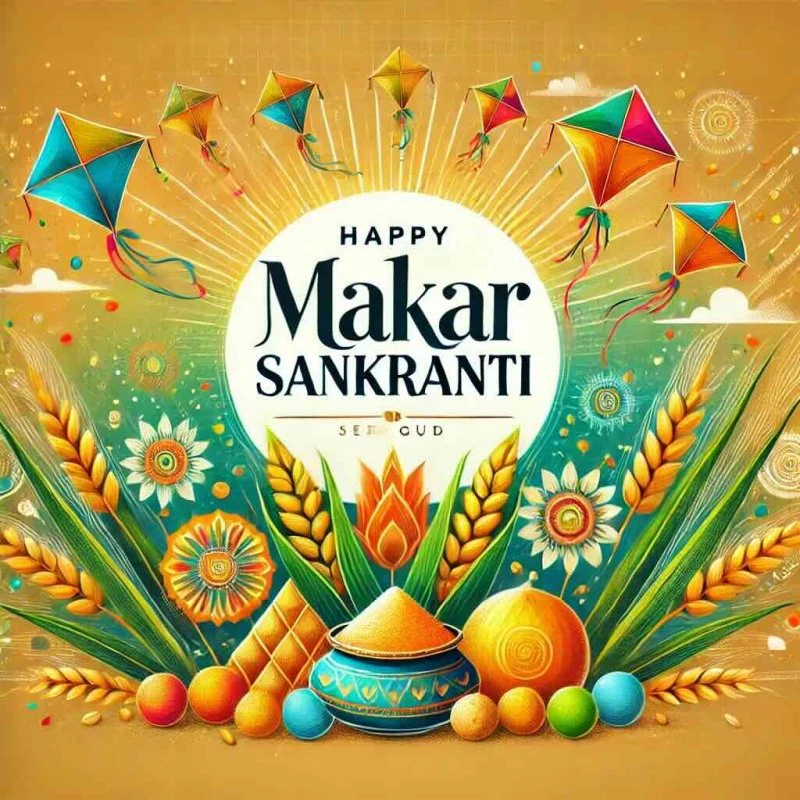14 January 2025: Makar Sankranti
As we approach 14 January 2025, India hums with expectation. Tomorrow denotes the festival of Makar Sankranti, quite possibly of the main celebration in the Indian schedule. This day holds colossal social, profound, and farming importance, saw with incredible excitement the nation over. Allow us to investigate the significance of this day and the arrangements in progress for Makar Sankranti.
What is Makar Sankranti?
Makar Sankranti is a gather celebration celebrated to check the sun’s progress into the zodiac indication of Capricorn (Makara). This cosmic occasion implies the start of longer days as the sun begins its toward the north excursion (Uttarayan). Falling commonly on 14 January 2025 consistently, the celebration is a period of appreciation, recharging, and euphoria for networks across India.

Historical and Mythological Significance
The celebration’s underlying foundations are profoundly implanted in Indian folklore and old sacred texts. It is accepted that on this day, the Sun God visits his child Shani, who rules Capricorn, representing the significance of family ties. Moreover, Makar Sankranti is related with different legends, like the triumph of good over insidious and the meaning of heavenly favors.
Astronomical Relevance
As indicated by an inestimable perspective, Makar Sankranti marks the completion of the colder season solstice and the beginning of longer days. This shift is basic for plant works out, as it shows an ideal time for gathering crops like wheat, rice, and sugarcane.
Preparations for Makar Sankranti
The arrangements for Makar Sankranti start days ahead of time, with families humming with action. This is the way individuals across India gear up for this propitious event:
Cleaning and Decorating Homes
Cleaning the house is an essential piece of the arrangements, representing a new beginning. Numerous families brighten their homes with vivid rangoli examples and hang archways (festoons) made of marigold blossoms and mango passes on to invite flourishing.
Preparing Traditional Foods
Makar Sankranti is inadequate without its flavorful treats. Extraordinary dishes produced using sesame seeds (until) and jaggery (gur) are ready, representing solidarity and pleasantness. Famous indulgences include:
- Tilgul Ladoos: Sweet sesame seed balls
- Puran Poli: A sweet flatbread
- Khichdi: An ex quisite rice and lentil dish, especially famous in North India
Shopping and Gifting
Markets are buzzing with customers buying new garments, kites, and presents. Trading tilgul ladoos and different desserts with loved ones is a typical custom, connoting generosity and solidarity.
Regional Variations of Makar Sankranti
India’s social variety is flawlessly reflected in the provincial festivals of Makar Sankranti. This is the way various states see this celebration:
Punjab: Lohri
In Punjab, Makar Sankranti is praised as Lohri just before the celebration. Huge fires are lit, and individuals accumulate to sing, dance, and appreciate customary food varieties like sarson da saag and makki di roti.
Gujarat and Rajasthan: Kite Festival
The skies of Gujarat and Rajasthan are improved with brilliant kites during Makar Sankranti. The Worldwide Kite Festivity held in Gujarat attracts individuals from around the world.
Tamil Nadu: Pongal
In Tamil Nadu, the celebration is commended as Pongal, a four-day gather celebration. Families set up an exceptional dish called Pongal, produced using recently reaped rice, jaggery, and milk.
Maharashtra: Tilgul Exchange
In Maharashtra, individuals trade tilgul ladoos with the expression “Tilgul ghya, god bola” (Take desserts and talk pleasantly), accentuating concordance and benevolence.
Karnataka and Andhra Pradesh: Ellu-Bella
In Karnataka and Andhra Pradesh, people set up a blend of sesame seeds, jaggery, and coconut called ellu-bella, addressing congruity.
West Bengal: Poush Sankranti
In West Bengal, the festival is called Poush Sankranti and is separate by the preparation of sweet dishes like pithe and payesh delivered utilizing recently assembled rice.
Spiritual Practices and Rituals
Makar Sankranti is a profoundly improving day. Lovers take blessed plunges in waterways like the Ganga, Yamuna, Godavari, and Krishna, accepting it filters the spirit and washes away sins. Unique supplications and contributions are made to the Sun God, looking for endowments for success and wellbeing.
Kite Flying: A Symbol of Freedom
Kite flying is a well known action during Makar Sankranti, particularly in Gujarat and Rajasthan. The demonstration of flying kites represents opportunity, delight, and the soul of rivalry.
Bonfires and Community Gatherings
In numerous districts, huge fires are lit, and individuals assemble to celebrate with music, dance, and eats. These social occasions encourage local area holding and a feeling of solidarity.
The Importance of Sustainability
As we plan for Makar Sankranti 2025, taking into account feasible practices is fundamental. Keeping away from plastic embellishments, involving regular materials for kites, and limiting food wastage are little advances that can have a major effect.
Looking Forward to Makar Sankranti 2025
With only one day to go, the fervor for Makar Sankranti 14 January 2025 is substantial. It is a future time along with friends and family, honor customs, and offer thanks for the favors of nature. Whether it’s through flying kites, sharing desserts, or taking a heavenly plunge, Makar Sankranti offers something uniquely great for everybody.
As we commend this lively celebration, let us likewise recall its more profound importance — the victory of light over haziness, the worth of solidarity, and the significance of concordance with nature. Wishing everybody a happy and prosperous Makar Sankranti!




2 thoughts on “14 January 2025: Makar Sankranti”